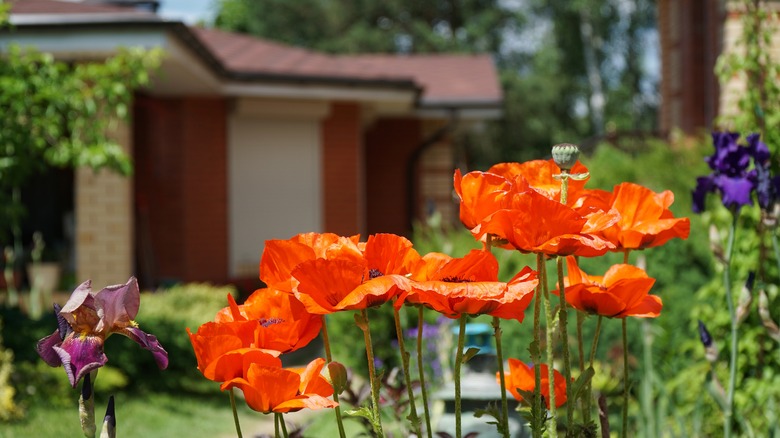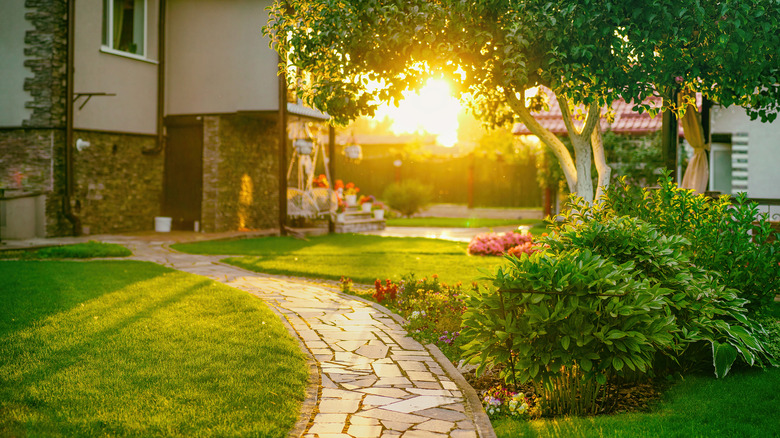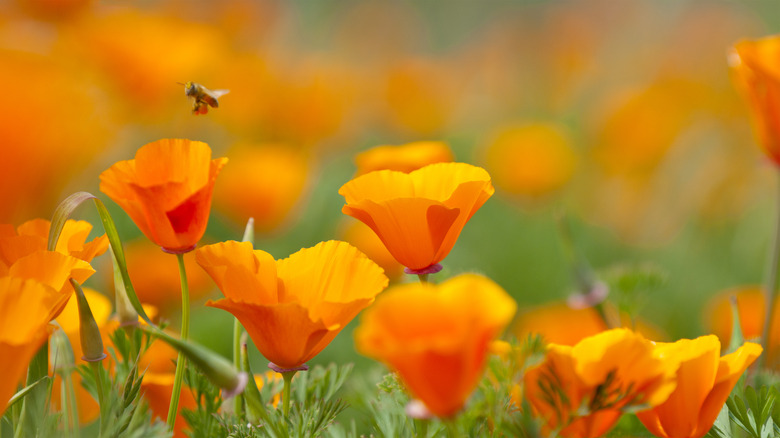The Best Spot In Your Garden To Plant Poppies
Poppies, or Papever somniferum, are beautiful, highly-saturated flowers that bring color and life to any garden. There are many subspecies of poppies, including Elka, Heirloom Pepperbox, and Ziar, and colors range from brilliant reds and pinks to pale purples and whites. Poppy planting season typically takes place at the beginning of spring, as these colorful beauties tend to bloom by late spring and early summer.
While typically very easy and fun flowers to grow, there are certain things you can do to guarantee that your poppies have the best chance of reaching their fullest potential. Poppies have specific environmental preferences, and they thrive when planted in breathable soil, receive an abundance of sunlight, and are watered thoroughly each week. Understanding these specifics will help you avoid common mistakes gardeners make when growing poppies, and you'll have all of the knowledge you need to ensure that your flowers bloom happily and healthily.
The search for the ideal spot
Ultimately, the most important decision you can make for your poppies is where you plant them. You'll want to find a spot with as minimal shade as possible. Poppies thrive when grown in spaces with maximum sun throughout the day. Adequate sunlight is crucial for poppies' growth because it's not only essential in the blooming process but also acts as another source of excess water removal.
Even if your yard is more shaded than sun-drenched, you can still plant and grow successful poppies. Study your property and the sunlight each section gets first thing in the morning, around noon, and a few more times throughout the evening until the sun sets. Find a spot that gets at least 6 hours of direct sunlight throughout the day, which will serve as the ideal spot to plant your sun-loving poppies. Once you've found a spot with adequate UV rays, the hard part is over. Now it's time to get planting.
Time to grow
Along with a high sunlight requirement, poppies flourish with particular soil and watering conditions. All flowers should be planted in fertilized and nutrient-filled topsoil to grow. More specifically, poppies require well-draining and breathable conditions. When the weather gets warm, plant your seeds a good distance apart (roughly 1 to 2 feet) and only about ⅛ inch under the topsoil.
Be sure to keep drainage in mind when planting poppies, especially if you live somewhere with a lot of rainfall. In areas with a surplus of rain, only plant poppies in raised garden beds. These alternatives to traditional garden beds have much better drainage and ensure that excess water isn't overwhelming your flowers' roots.
While the flowers themselves thrive in airy soil, it's vital to keep poppy seeds moist until they have germinated successfully. Once the plants form, be sure they are thoroughly watered once a week (whether by rainfall, watering can, or hose), and watch your garden bloom.


